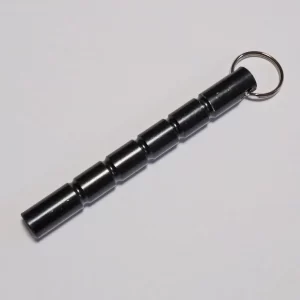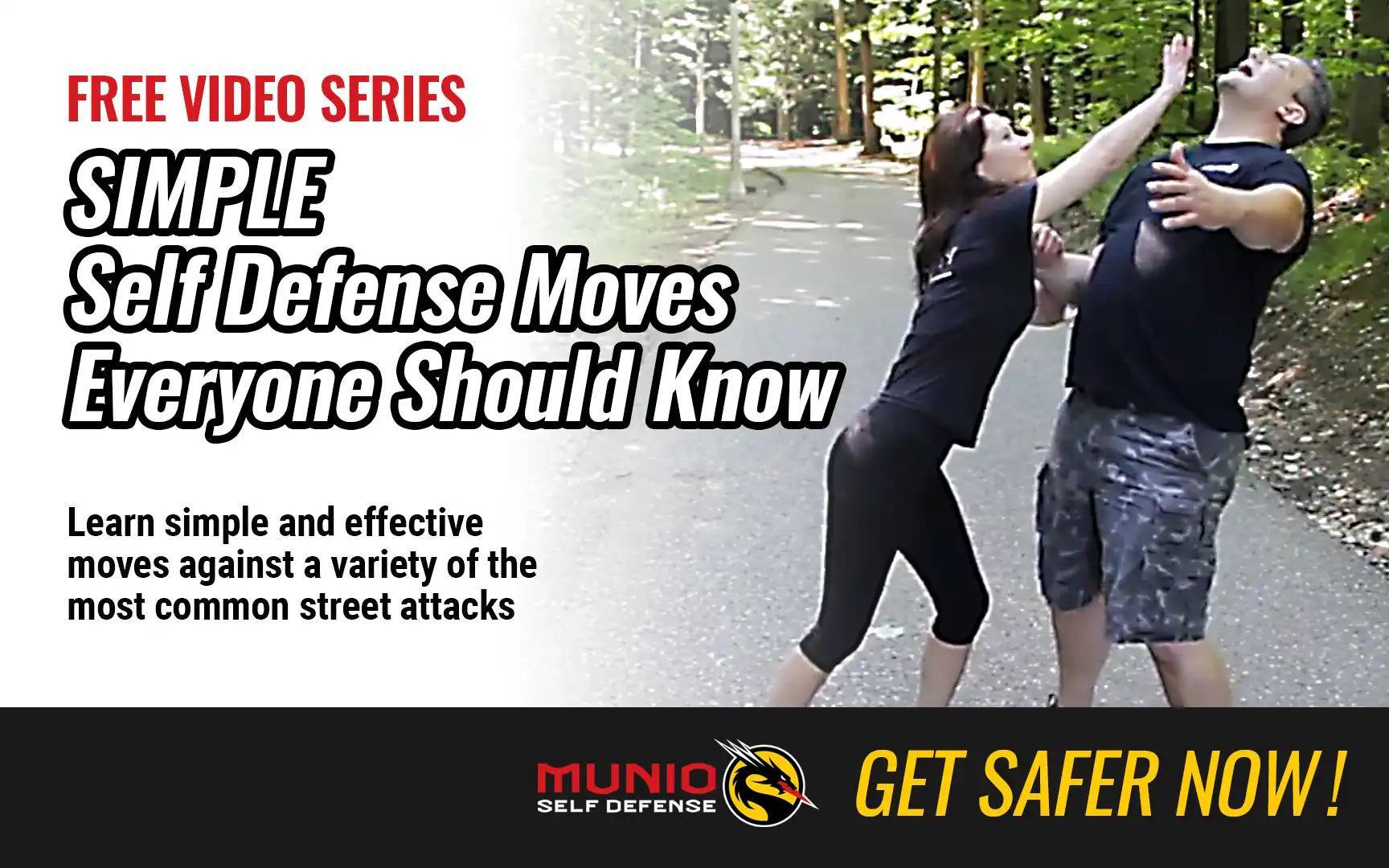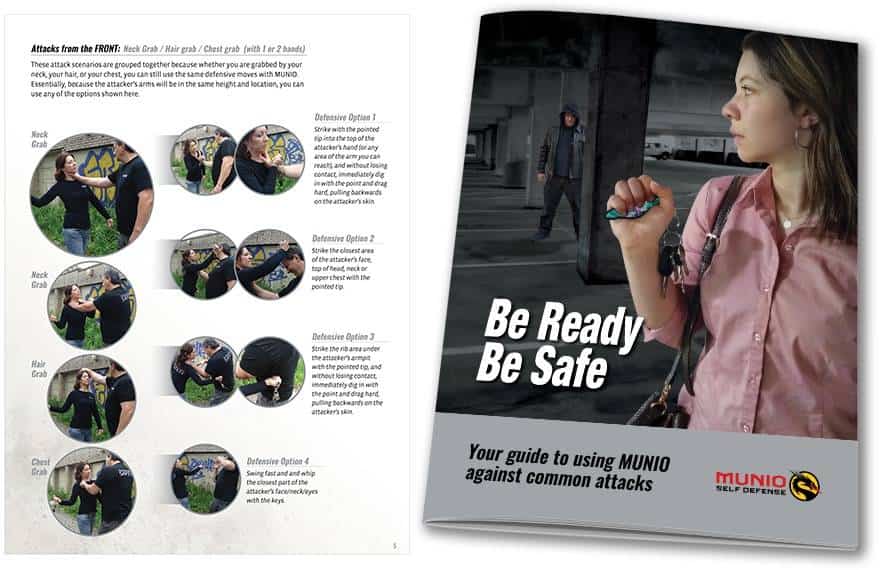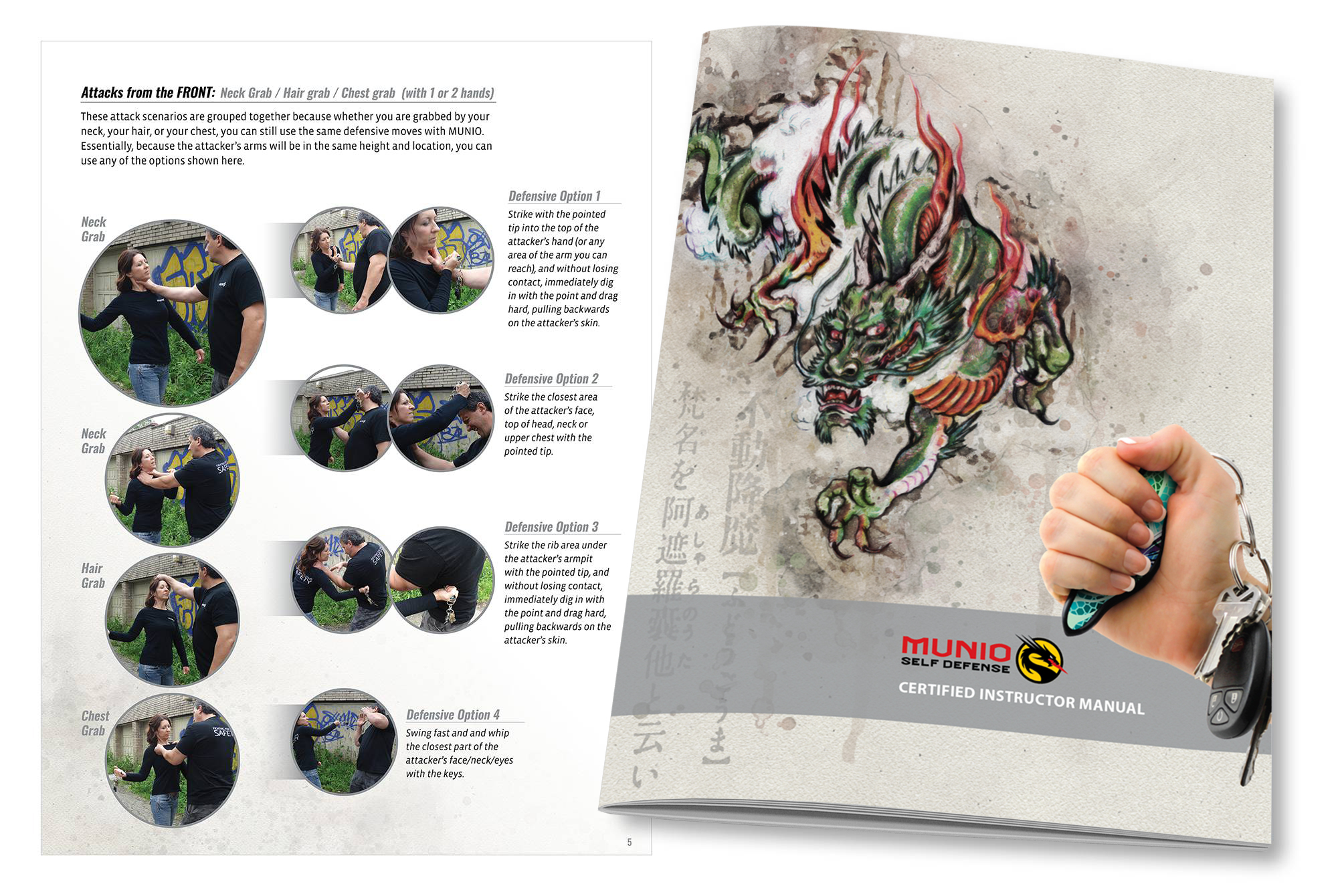Looking for some basic self-defense moves to protect yourself in the event of an attack? The good news is, you don’t have to be a martial arts expert to disable an attacker. In fact, in the event of real-life danger, as a rule, the simpler the move, the better.
I’ve hand-picked the following moves as they are both simple and have a good chance of helping you get away safely should you have to use them. Remember to always use speed, power, and intensity to maximize effectiveness, and be prepared to follow up with other strikes as needed.


1. Strike the Attacker using a Headbutt
How to headbutt someone:
- Drop your head down and forcefully thrust the top of your head into the attacker’s face.
- If you are grabbed from behind, tilt your head backward and forcefully thrust the back of your head into the attacker’s face.
Pro Tip: Avoid using your forehead for the strike. It might seem easier, but you can end up with a nasty cut and a couple of black eyes.




2. Strike the Attacker’s Eyes
- Reach out and swipe/rake/claw the fingers of one hand across one or both of the attacker’s eyes (from L to R, or R to L).
- You can use loose fingers (think friendly wave), or tighter fingers (think salute).
- You can also poke the finger(s) of one hand into one of the attacker’s eyes, or worse, grab onto both sides of the attacker’s head and stick your thumbs into both of the attacker’s eyes.

3. Strike the Attacker’s Throat
- Open up a hand and move your thumb out away from the four fingers of one hand.
- Using the space between your thumb and index finger as the impact area, strike into the attacker’s throat and neck with speed and force.
- Hit and retract.
The throat strike can also be done with a punch, hand chop, elbow, or forearm.


4. Strike the Attacker using your Palm
Tilt one of your hands back slightly and then, using your palm as the impact area, strike into the attacker’s face. Good targets are striking directly below and into the nose or the jaw.



5. Strike the Attacker with an Elbow
This is one of the best strikes to use in close quarters:
- Bring your hand and forearm inward toward your center and strike into the attacker’s face (or body) using an elbow as the impact point.
- Elbow strikes also work well against attacks from behind, by striking behind and around your shoulder to the attacker’s head or striking behind and lower into the attacker’s body.

6. Strike the Attacker with a Front Kick
Keep your balance on one leg, and kick forward with your other leg, striking the shin, knee, groin, or midsection of the attacker.
Pro Tip: Simultaneously push forward when kicking to help create space between you and the attacker. Immediately retract your kick and re-stabilize yourself.
There are variations of this concept used to kick backward and sideways, but they typically require more balance and skill.

7. Strike the Attacker Using your Knee
While balancing on one leg, simultaneously thrust the opposite knee up and forward, striking the groin, midsection, face, etc.
Pro Tip: For increased effectiveness, grab onto the attacker with both of your hands (ex. around the neck, on the shoulders), and pull down and inward on the attacker while striking.
How Do I Learn Basic Self-Defense Moves?
Self-defense is just like any other discipline: it takes practice to gain confidence and mastery. The best way to learn basic self-defense moves is to drill them. Watch our free 10-video series, “Simple Self-Defense Moves Everyone Should Know,” with a friend or family member and pause after each move to practice with each other. Look for self-defense classes near you that specialize in real-life self-defense techniques and simulate common street attack scenarios to further develop your skills.
3 Strategies for Self Defense
While being armed with these basic self-defense moves will definitely help in the event of an attack, don’t forget to follow these strategies for self defense to ensure maximum protection:
- Avoid danger in the first place: One of the most effective ways to avoid danger is to, well, avoid dangerous situations in the first place. For example, don’t walk alone in unlit places.
- Be aware of your surroundings: If you must walk alone somewhere, take your earbuds out and don’t let yourself get distracted by your phone.
- Be prepared with protection: An everyday carry weapon such as a self-defense keychain can mean the difference between successfully fending off an attacker and a potentially life-threatening assault.
Be Safe and Be Ready
These basic self-defense moves are meant to be a helpful starting point. Of course, there’s no substitute for physical practice, which will unquestionably make you perform better. That’s the value of traditional martial arts and self-defense training. Short of that, using a practical, easy-to-use self-defense product like the MUNIO Self-Defense Kubotan Keychain is your best protection. Shop our collection today.
Looking for a safe backup for pepper spray?
Shop the MUNIO collection now. And make sure to watch our free 10-video series, “Simple Self-Defense Moves Everyone Should Know.”
Are you a self-defense instructor?
Empower your students with real-life self-defense techniques using MUNIO, the leading safety keychain solution. Learn more about MUNIO instructor certification.








